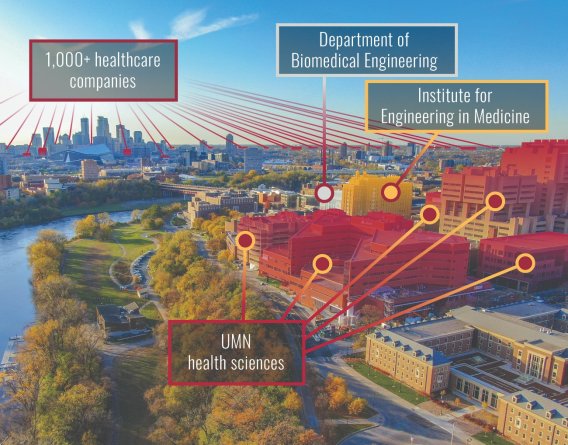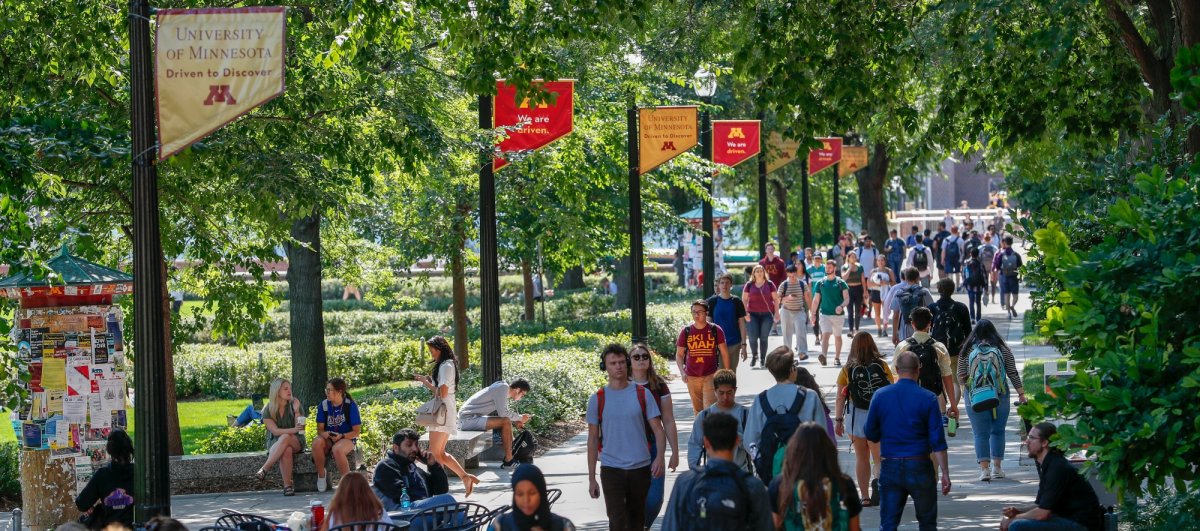Three plans
Master's-Plan A: Thesis
For students who want to do research.
- 20 credits of coursework
- 10 thesis credits and a final defense
Master's-Plan B: Project
For students looking to strike a balance between research and coursework.
- 28 credits of coursework
- 2 to 3 Plan B Project credits and a final defense
Master’s-Plan C: Coursework only
For students who are already working or who want to work in industry, where having research experience is not going to be required.
- 30 credits of coursework
Note: There’s no research component.
Plans give you flexibility in how you balance coursework, research, and even a job. You aren’t locked into a plan and can switch at any time.
Additional programs
A top public research university
The University of Minnesota Twin Cities is a top 10 U.S. public research university with world-class facilities.

Broad, deep research and training environment
You’ll have the opportunity to work closely with graduate faculty members who span the full spectrum of biomedical engineering.
Our 80+ faculty hail from more than 20 departments as well as our own, which has special research expertise in cardiovascular, neural, and cancer bioengineering.

Proximity to engineering, science, and medicine
We’re adjacent to the Medical School and other University of Minnesota science and engineering domains — they’re just steps away and connected by tunnels.
This proximity creates an intellectual environment where there’s:
✓ Interdisciplinary research.
✓ Engineering being applied to fundamental biological questions.
✓ Clinical and translational research collaborations.
A great place to live
The Minneapolis-St. Paul area offers vibrant culture and arts and abundant opportunities to enjoy the outdoors — all at a lower cost of living than cities on the east or west coast.
Fulfilling career opportunities
- Biomedical engineer
- Research and development engineer
- Prosthesis designer
- Medical device designer
- Manufacturing engineer
- Quality control/assurance engineer
- Medical diagnostics
- Rehabilitation engineer
- Physiological systems engineer
An inclusive, close-knit community

Diversity, equity, and inclusion (DEI) is integral to departmental decision-making, including graduate admissions. In fact, we were among the first Biomedical Engineering departments with a full-time DEI Coordinator, Gabbi Horsford.
Students also enjoy highly engaged student groups.

Contact us and more information
Dave Wood
Director of Graduate Studies
dkwood@umn.edu
Erica Ratner
Graduate Program Coordinator
bmengp@umn.edu
